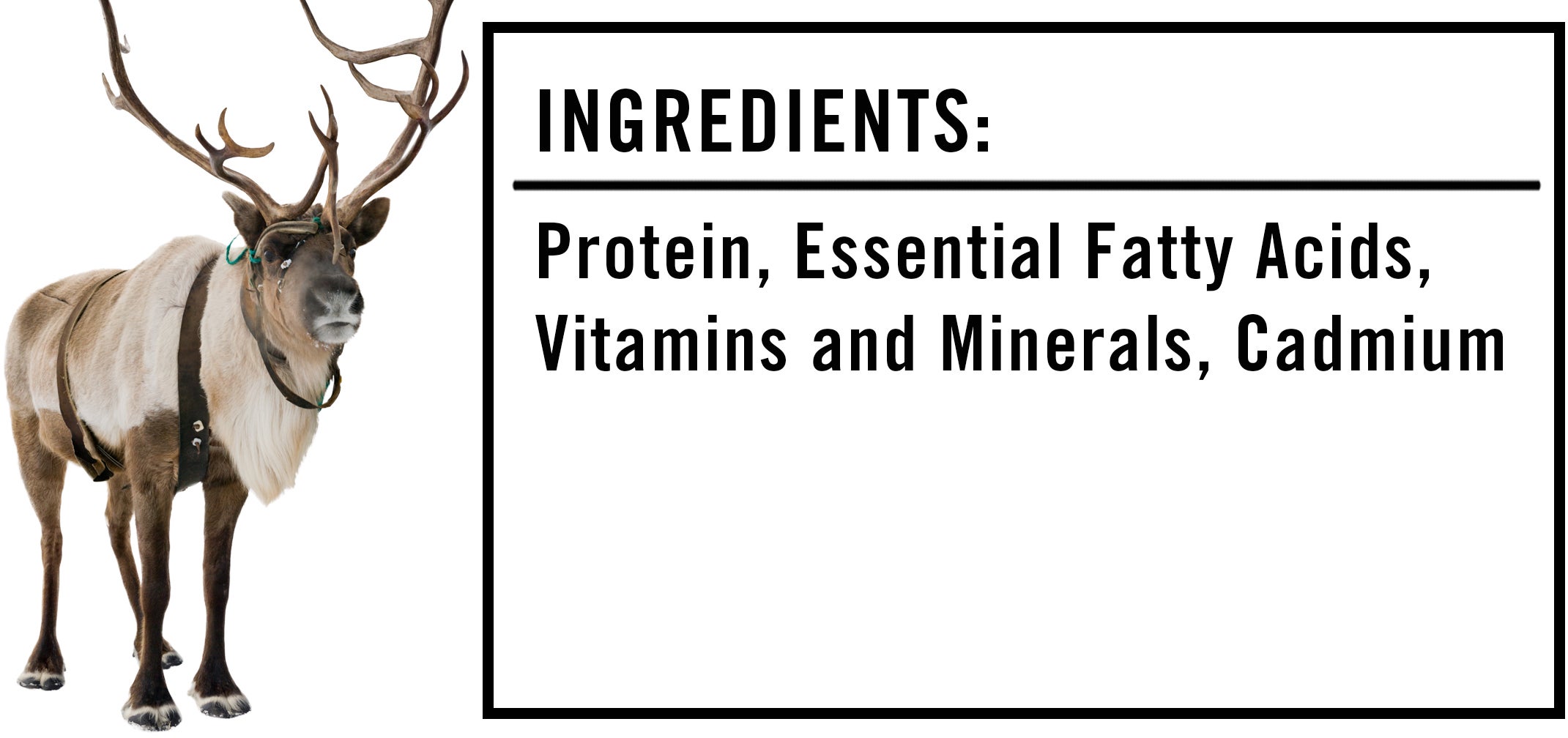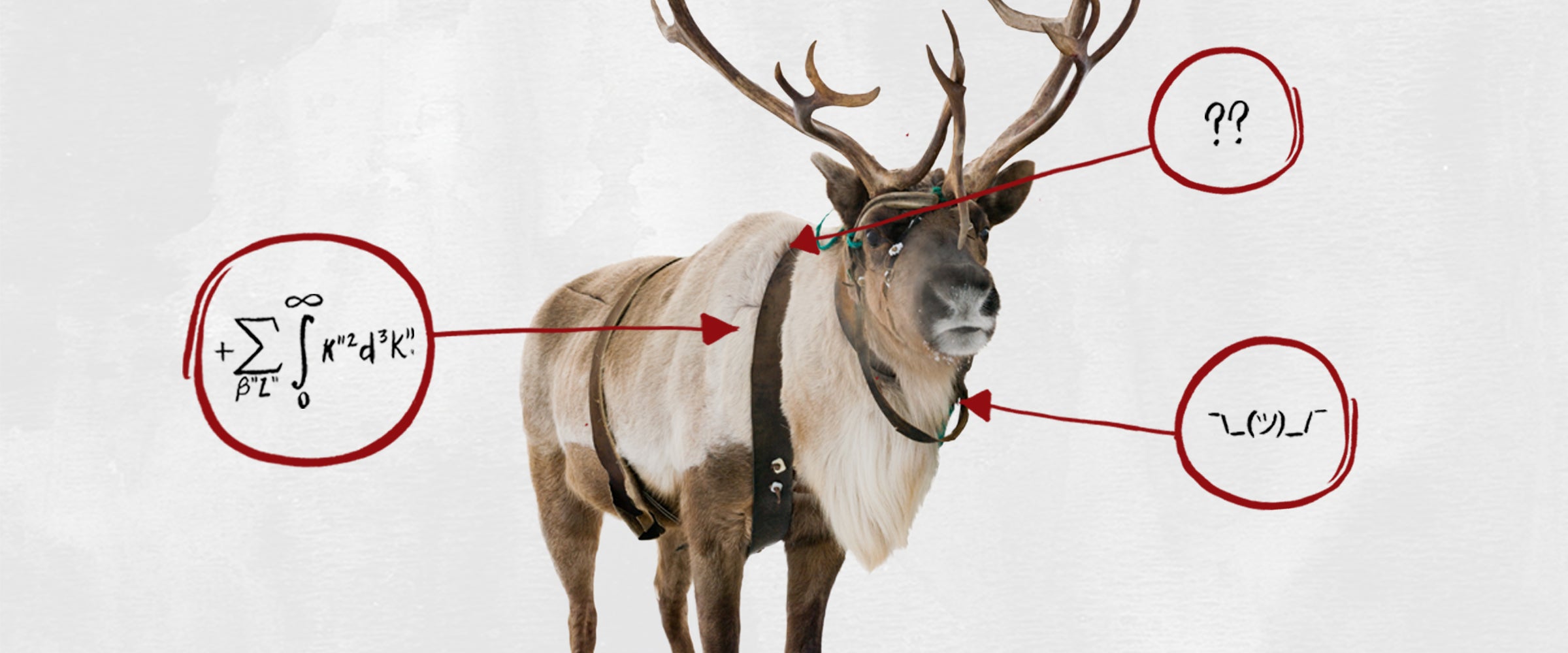We’re often told that you should never eat anything (or put anything on your body) if you don’t recognize everything on the ingredients list. But since most of us have no idea what xanthan gum or potassium benzoate are — or more importantly, what they’re doing to our bodies — we’re decoding the ingredients in the many things Americans put in (and on, or near) themselves.
This edition: reindeer meat, which has been dissected in detail below. Now, while the thought of slaughtering and slamming a Prancer burger might sound outrageous to we Americans, Norwegians treasure their frequent reindeer-meat feasts. Head to the likes of Oslo and expect to encounter smoked reindeer, grilled reindeer, reindeer pizza, reindeer tartare and various other forms of festive flesh.
Reindeer steaks also made an appearance in one large British supermarket chain back in 2014, although several animal rights groups gave them a good reprimanding, because apparently reindeer are just too damn cute to be noshed on. “I don’t think reindeer meat slices will find much of a market in Britain,” English food writer Rose Prince commented at the time, “not just because of the emotional reaction to them, but also because they taste disgusting.” The Norwegians, I imagine, would beg to differ.
Anyway, time to take a look into the insides of reindeer meat.

The Ingredients
1) Protein: Reindeer meat is loaded with protein, boasting anywhere between 20 and 24 grams in about three and a half ounces (a portion just a little larger than the size of a deck of cards). This amount of protein is comparable to the same size portion of most red meats. The great thing about reindeer meat, though, is that while beef, for example, usually has a fat content of about 9 percent, reindeer meat sits around only 2 percent, which is much better for your heart.
2) Essential Fatty Acids: Essential fatty acids are fatty acids that humans and other animals must ingest, since the body requires them for good health, but is unable to create them internally. While fish are most famous for being great sources of essential fatty acids, interestingly enough, reindeer are, too: According to one study, reindeer meat contains concentrations of docosapentaenoic acid (which can help reduce inflammation and your risk of developing chronic diseases) and α-linolenic acid (which is necessary for a healthy brain) that are comparable to those reported in crab, scampi, mussels and oysters. Moreover, one serving of reindeer meat contains the daily recommended doses of omega-3 and omega-6 fatty acids, which prevent heart disease, among other good things.
One of the reasons why reindeer meat is believed to be so nutritious is because reindeer feed on lichen, a slow-growing plant that happens to be incredibly dense in nutrients.
3) Vitamins and Minerals: Per the same study mentioned above, “We have found that semi-domesticated reindeer meat contains higher vitamin B12, iron, zinc and selenium concentrations when compared to Norwegian beef, lamb, mutton, pork and chicken meat.” Sweet!
Vitamin B12 helps create DNA, keeps your nerve and blood cells healthy and prevents megaloblastic anemia, which makes people tired and weak. Iron transports oxygen throughout the body, zinc bolsters the immune system and selenium can help prevent cancer. In other words, this is all good stuff.
4) Cadmium: The one potential drawback to reindeer meat is the presence of cadmium in some of their livers, depending on the region in which they reside. Ingestion of any significant amount of cadmium can cause immediate poisoning and damage to your liver and kidneys. Fortunately, reindeer liver is rarely consumed, and you’d need to dine on an unusual amount of liver over a substantial period of time to actually experience cadmium poisoning.
The Takeaway
Rudolph better watch his back this year, because reindeer meat is some of the healthiest meat out there. Maybe avoid that weird red growth on the nose, though.

